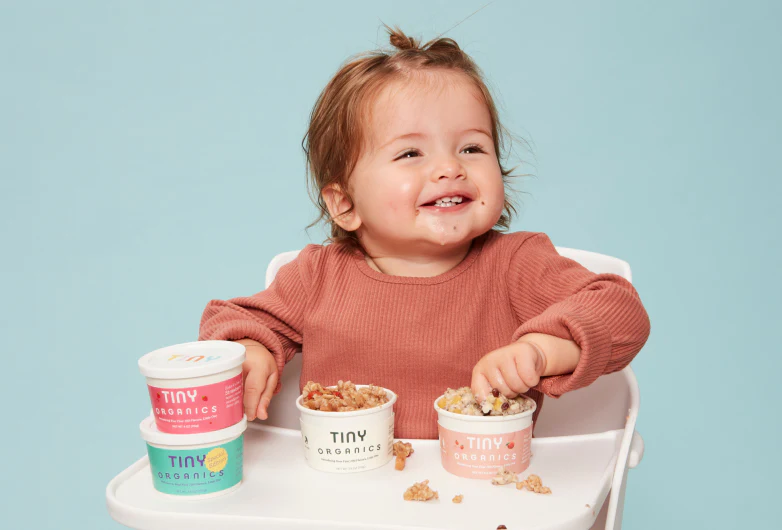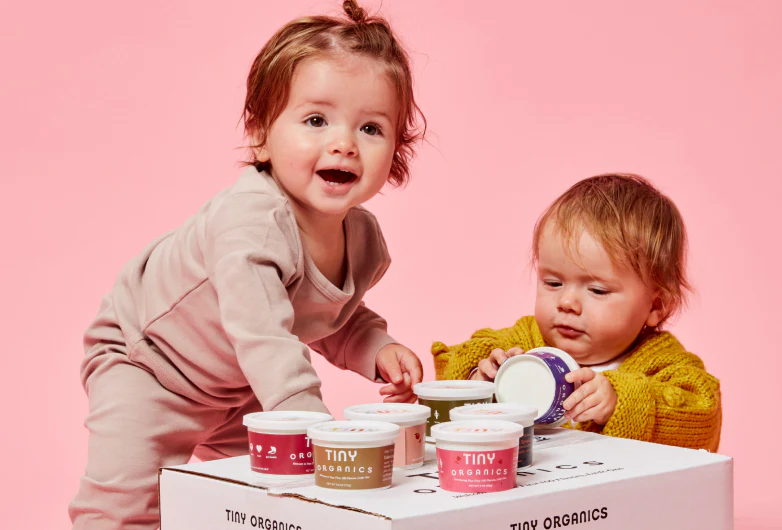Play Smarter, Not Harder: Your Guide to Developmental Toys by Age
Remember the sheer joy of a new toy as a kid? That brightly colored box holding untold adventures? Toys are more than just fun diversions; they are the fundamental tools children use to learn about themselves and the world around them. But step into any toy store (or browse online), and the sheer volume of options can be overwhelming. How do you choose toys that are not just entertaining but actively support your child’s growth and development? Welcome to the world of developmental toys!
Choosing the right toy at the right time can make a significant difference in nurturing your child’s budding skills – from grasping a rattle to solving a complex puzzle. This guide is designed to cut through the noise, offering clear, actionable advice on selecting the best developmental toys by age. We’ll explore why these toys matter, what to look for, and provide specific recommendations for babies, toddlers, and preschoolers. Let’s unlock the power of play together!
What Exactly Are Developmental Toys (And Why Should You Care)?
Simply put, developmental toys are designed with a child’s growth stages in mind. They aim to stimulate learning and encourage the development of specific skills appropriate for different age groups. Unlike toys solely focused on entertainment, developmental toys often have an educational underpinning, even if it’s cleverly disguised as fun!
Think about it: a simple set of stacking cups isn’t just about stacking. It teaches:
- Fine Motor Skills: Grasping, manipulating, placing objects precisely.
- Hand-Eye Coordination: Aligning the cups to stack them.
- Problem-Solving: Figuring out which cup fits where, nesting them inside each other.
- Cognitive Concepts: Size relationships (big vs. small), counting, spatial awareness (in, on, under).
That’s a lot of learning packed into one simple toy! The benefits of incorporating developmental toys into playtime are vast and touch upon every area of a child’s growth:
- Cognitive Development: Enhancing memory, problem-solving abilities, critical thinking, understanding cause and effect, and recognizing patterns, shapes, and colors.
- Motor Skill Development: Refining both fine motor skills (using small muscles in hands and fingers for tasks like drawing or buttoning) and gross motor skills (using large muscle groups for activities like crawling, walking, running, and jumping).
- Language and Communication Skills: Encouraging vocabulary expansion, listening skills, and expressive language through interactive play, storytelling, and naming objects.
- Social and Emotional Growth: Fostering sharing, turn-taking, cooperation, empathy, emotional expression, and self-regulation, often through pretend play or group games.
- Sensory Stimulation: Engaging the senses (sight, sound, touch, sometimes even smell and taste for babies) which is crucial for brain development, especially in the early years.
Investing in good developmental toys isn’t about showering your child with the most expensive gadgets; it’s about providing tools that match their current abilities and gently challenge them to reach the next milestone.
Choosing Wisely: Tips for Selecting the Best Developmental Toys

Before we dive into age-specific recommendations, let’s cover some general principles for choosing toys that truly benefit your child:
- Safety First, Always: This is non-negotiable. Check for age recommendations (especially warnings about small parts for children under 3), non-toxic materials, durable construction (no sharp edges or easily breakable pieces), and secure battery compartments if applicable. Look for certifications from relevant safety standards bodies.
- Age Appropriateness is Key: A toy that’s too simple will lead to boredom, while one that’s too advanced will cause frustration. Look for the manufacturer’s age guidance, but also consider your individual child’s development, interests, and abilities. The goal is a toy that engages and challenges, but doesn’t overwhelm.
- Prioritize Open-Ended Toys: These are the superstars of the developmental toy world! Open-ended toys, like blocks, art supplies, play dough, or simple figures, can be used in countless ways, limited only by the child’s imagination. They encourage creativity, problem-solving, and independent play far more effectively than single-function toys.
- Consider the Skills Targeted: Think about what areas you want to support. Does your toddler need help with fine motor skills? Look for puzzles or lacing beads. Is your preschooler working on social skills? Consider board games or dress-up clothes.
- Follow Your Child’s Interests: A toy is only beneficial if it gets played with! Pay attention to what fascinates your child. If they love dinosaurs, find dinosaur-themed puzzles or figures. If they’re obsessed with vehicles, look for construction sets or ride-on toys.
- Durability Matters: Children, especially younger ones, are not always gentle. Choose toys made from sturdy materials that can withstand enthusiastic play (and maybe being dropped or chewed on).
- Balance is Important: Aim for a variety of toys that cater to different types of play – active play, quiet play, creative play, social play, and independent play. Don’t forget the value of simple, classic toys over flashy electronics.
Developmental Toys for Babies (0-12 Months): A World of Sensory Exploration
The first year of life is a period of incredible sensory discovery and rapid physical development. Toys for babies should focus on stimulating their senses, encouraging movement, and fostering the bond between caregiver and child.
0-3 Months: Focusing and Tracking
Newborns are just beginning to make sense of the world. Their vision is developing, and they are drawn to high-contrast patterns and human faces.
- High-Contrast Mobiles: Simple black, white, and red geometric shapes hung safely above the crib or changing table encourage visual tracking. Ensure it’s out of reach.
- Soft Rattles & Wrist Shakers: Lightweight rattles with gentle sounds help develop auditory senses and encourage grasping reflexes. Wrist shakers provide auditory feedback to movement.
- Unbreakable Mirrors: Crib-safe mirrors allow babies to see their own reflection (and yours!), fostering self-awareness and visual focus.
- Your Voice & Face: Seriously! Singing, talking, and making faces are incredibly stimulating and crucial for bonding and early language exposure.
3-6 Months: Reaching, Grasping, and Mouthing
Babies are gaining more control over their movements, reaching for objects, and exploring everything with their mouths (a key sensory organ!).
- Activity Gyms/Play Mats: These provide a safe space for tummy time (essential for strengthening neck and back muscles) and reaching practice with dangling toys of various textures and sounds.
- Teething Toys: Safe, textured toys made from silicone or rubber provide relief for sore gums and encourage oral exploration. Look for easy-to-grasp shapes.
- Soft Books with Textures: Fabric or vinyl books with crinkly pages, different textures, and bright pictures engage multiple senses.
- Lightweight Grasping Toys: Rings, keys on a ring, or soft balls that are easy for small hands to hold, shake, and bring to their mouth.
6-9 Months: Sitting Up, Exploring Cause & Effect
Many babies are sitting independently, improving their hand-eye coordination, and starting to understand that their actions can make things happen.
- Stacking Cups or Rings: Classic toys that teach size relationships, nesting, stacking, and fine motor skills. They’re also great for bath time!
- Soft Blocks: Easy to grasp, stack (and knock down!), and safe to chew on. They introduce basic construction concepts.
- Simple Cause-and-Effect Toys: Toys where pushing a button makes a sound or opens a flap. Think activity cubes or simple pop-up toys.
- Balls: Soft, textured balls are great for rolling back and forth (promoting social interaction and tracking), grasping, and encouraging crawling.
- Board Books: Sturdier than soft books, perfect for little hands learning to turn pages. Pointing to and naming pictures builds vocabulary.
9-12 Months: Crawling, Pulling Up, and Problem-Solving
Mobility increases dramatically! Babies are often crawling, pulling themselves up to stand, and perhaps even taking their first steps. They are also becoming better problem solvers.
- Push Toys: Walkers or trolleys (the sturdy kind they push, not sit in) provide support for early walkers and encourage gross motor development.
- Shape Sorters: Simple versions with basic shapes (circle, square, triangle) help develop fine motor skills, shape recognition, and problem-solving.
- Large Pop Beads or Connecting Toys: Toys that click together and pull apart strengthen hand muscles and teach basic construction.
- Simple Musical Instruments: Toy pianos, xylophones (with safe mallets), or shakers allow exploration of sound and rhythm.
- Ride-On Toys (Low to the Ground): For babies who are stable sitters, scooting toys encourage leg strength and coordination.

Developmental Toys for Toddlers (1-3 Years): Exploring Independence and Imagination
Toddlerhood is a whirlwind of energy, exploration, and burgeoning independence. Language skills explode, motor skills become more refined, and imaginative play begins to blossom. Toys for this age should support these developing abilities.
12-18 Months: Walking, Talking, and Imitating
Early toddlers are mastering walking, starting to use single words or short phrases, and love imitating the actions of others.
- Push and Pull Toys: Beyond walkers, toys like wooden animals on strings or toy lawnmowers make walking more fun and encourage coordination.
- Large Knob Puzzles: Simple wooden puzzles (3-5 pieces) with large knobs are perfect for developing fine motor skills, hand-eye coordination, and shape/object recognition.
- Stacking and Nesting Toys (More Complex): Stacking rings or cups continue to be valuable, perhaps with more pieces or varied shapes.
- First Building Blocks: Larger-sized blocks (like Mega Bloks or wooden unit blocks) are great for little hands to stack and build simple structures.
- Board Books with More Text: Introduce books with simple stories and repetitive phrases. Encourage pointing and naming.
- Toy Phones or Remote Controls: Capitalize on their love of imitation with safe, pretend versions of adult objects.
18-24 Months: Problem-Solving and Pretend Play Emerges
Toddlers are becoming more adept problem solvers, their vocabulary is growing rapidly, and the first signs of pretend play appear (like feeding a doll or driving a toy car).
- More Complex Shape Sorters: Introduce sorters with more shapes or variations.
- Simple Construction Sets: Continue with larger blocks, encouraging taller towers and more elaborate creations.
- Dolls and Stuffed Animals: Provide opportunities for nurturing play, imitation, and emotional expression. Basic accessories like bottles or blankets enhance the play.
- Play Kitchens or Tool Benches (Simple): Basic sets allow toddlers to imitate household activities, fostering imaginative play and vocabulary development.
- Ride-On Toys: Toys they can propel with their feet build leg strength and coordination.
- Art Supplies (Washable): Introduce large, chunky crayons, washable markers, and large paper for scribbling and early mark-making. Always supervise closely!
- Musical Instruments: Tambourines, drums, or maracas encourage rhythm exploration and self-expression.
2-3 Years: Imagination Takes Flight, Fine Motor Skills Refine
Language becomes more complex, imaginative play scenarios become more elaborate, and fine motor skills allow for more intricate manipulation.
- Dress-Up Clothes and Props: A collection of hats, scarves, old clothes, and props (doctor’s kit, chef’s hat) fuels imaginative role-playing.
- Building Blocks (Smaller Scale): Introduce sets like LEGO Duplo or more complex wooden block sets for intricate building.
- Transportation Toys: Cars, trucks, trains with tracks – these encourage imaginative play, spatial reasoning, and fine motor control.
- More Complex Puzzles: Move to interlocking jigsaw puzzles with 8-20 larger pieces.
- Art Supplies (Expanded): Introduce washable paints (finger paints or with chunky brushes), play dough with tools (rolling pins, cookie cutters), and safety scissors (with supervision) for snipping practice.
- Tricycles or Balance Bikes: Great for developing gross motor skills, balance, and coordination. Ensure proper safety gear (helmet!).
- Picture Books with Stories: Engage with books that have clear narratives, and ask questions about the plot and characters to build comprehension.
- Simple Matching Games: Picture dominoes or memory games help develop visual discrimination and memory skills.

Developmental Toys for Preschoolers (3-5 Years): Preparing for School and Beyond
Preschoolers are becoming increasingly independent, social, and capable of complex thought. Their play reflects this, becoming more cooperative, imaginative, and rule-based. Toys for this age group often bridge the gap between play and more formal learning, supporting pre-reading skills, numeracy, scientific thinking, and social competence.
Focus Areas for Preschool Toys:
- Advanced Fine Motor Skills: Needed for writing, drawing, cutting, and manipulating small objects.
- Problem Solving & Critical Thinking: Figuring out how things work, planning, and executing ideas.
- Social & Emotional Learning: Cooperation, sharing, negotiation, understanding rules, managing emotions.
- Pre-Literacy & Numeracy Skills: Letter and number recognition, counting, simple math concepts, storytelling.
- Creativity & Imagination: Creating elaborate scenarios, stories, and artwork.
- Early STEM (Science, Technology, Engineering, Math): Exploration, experimentation, building, logical sequencing.
Great Toy Choices for Preschoolers (3-5 Years):
- Construction Sets: LEGO Classic (smaller bricks than Duplo), Magna-Tiles, wooden planks (like Keva or Kapla), Tinkertoys, or gears sets allow for complex building, engineering exploration, and spatial reasoning.
- More Detailed Pretend Play Sets: Elaborate dollhouses, action figures, play shops, science labs, or puppet theaters encourage storytelling, social interaction, and vocabulary building.
- Board Games & Card Games: Simple games like Candy Land, Chutes and Ladders, Memory, or Go Fish teach turn-taking, following rules, counting, color/shape recognition, and handling winning/losing.
- Jigsaw Puzzles: Increase complexity to 24-60+ pieces, featuring themes that interest the child. Floor puzzles are also great.
- Art & Craft Supplies: A well-stocked art station with various types of paper, crayons, markers, colored pencils, paints, brushes, glue, safety scissors, collage materials, and modelling clay supports creativity and fine motor development.
- Science Kits & Exploration Tools: Simple experiment kits (volcano making, crystal growing), magnifying glasses, bug catchers, or binoculars encourage curiosity and scientific thinking.
- Early Learning Toys (Use Sparingly): While not essential, some electronic toys focusing on letters, numbers, or phonics can supplement learning if used interactively and not as passive entertainment. Choose those that are engaging and adaptable.
- Outdoor Equipment: Bikes with training wheels (or progressing from a balance bike), scooters, climbing structures, balls, and gardening tools promote gross motor skills, coordination, and appreciation for the outdoors.
- Books, Books, Books: Continue reading aloud daily! Choose books with richer vocabulary, more complex plots, and diverse characters. Encourage retelling stories or predicting outcomes.
Beyond the Age Brackets: Practical Tips for Toy Management
While age guidelines are helpful, remember they are just guidelines. Every child develops at their own pace.
- Observe Your Child: Pay attention to what toys they gravitate towards, how they play, and where they might need a gentle nudge towards a new skill.
- Don’t Toss Toys Too Soon: Many toys span multiple age ranges. Blocks, art supplies, and dolls can be enjoyed differently as a child grows. An older child might use stacking cups for sorting small items or in elaborate pretend play scenarios.
- Introduce Complexity Gradually: If a child struggles with a 24-piece puzzle, go back to a 12-piece one for a while. Build confidence before increasing the challenge.
- Toy Rotation is Your Friend: Avoid overwhelming your child (and yourself!) by keeping only a selection of toys available at any one time. Store the rest away and rotate them every few weeks or months. This keeps toys feeling fresh and exciting, reduces clutter, and allows children to engage more deeply with the available options.
- Quality Over Quantity: It’s better to have a smaller number of high-quality, open-ended toys than a room overflowing with cheap, single-purpose plastic items.
- The Most Important Toy? You! No toy can replace the value of interaction with a caring adult. Get down on the floor and play! Engage with your child, follow their lead, ask questions, and share in their discoveries. This interaction is crucial for language development, social-emotional growth, and strengthening your bond.
Conclusion: The Lasting Power of Purposeful Play
Navigating the world of children’s toys doesn’t have to be daunting. By understanding the principles of child development and focusing on toys that support specific skills at different stages, you can make informed choices that foster learning, creativity, and joy. From the simplest high-contrast card for a newborn to a complex building set for a preschooler, developmental toys act as catalysts for growth, helping children build the cognitive, physical, social, and emotional foundations they need to thrive.
Remember to prioritize safety, age-appropriateness, and open-ended play potential. Observe your child’s unique interests and abilities, and don’t underestimate the enduring value of classic toys like blocks, puzzles, and art supplies. Most importantly, remember that your engagement and interaction during playtime are the most powerful developmental tools of all.
By choosing wisely and playing purposefully, you’re not just giving your child a toy – you’re giving them opportunities to learn, explore, imagine, and grow into capable, curious, and confident individuals. Happy playing!










